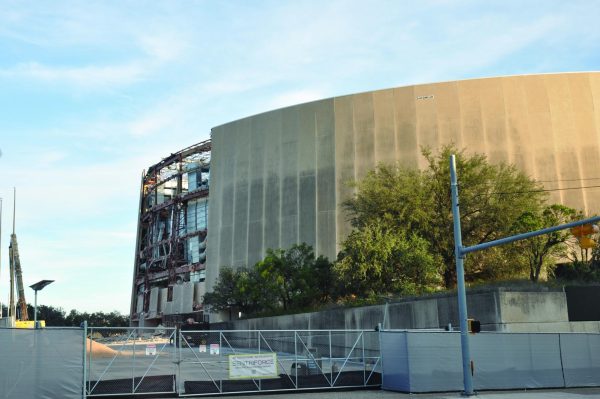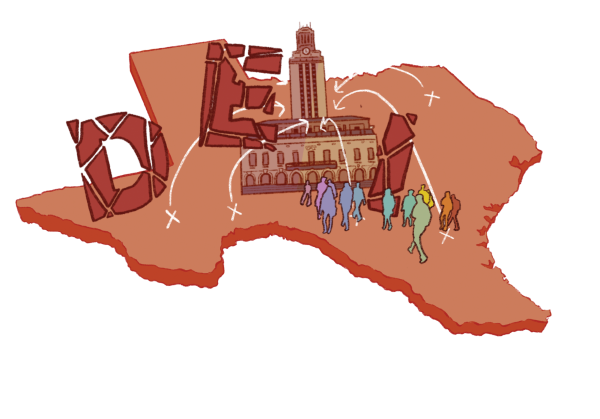Texas Faces Grind Time for Grid Time: An Update on ERCOT One Year Post-Freeze
March 28, 2022
On Feb. 13, 2021, winter storm Uri hit Texas, inducing power outages, limited resource access, and damage to homes. According to the Texas Department of State and Health Services, 246 Texans died from winter-storm related deaths. 21 of those deaths were in Austin.
The Electrical Reliability Council of Texas (ERCOT) operates Texas’s electrical grid. Carey King, a research scientist and Assistant Director of the Energy Institute at University of Texas at Austin, says ERCOT functions as a traffic cop, monitoring the grid and noting the flow of energy and transactions.
“They take account of energy power flowing from one place to another and they take account of who’s buying and who’s selling it at what price,” King said. “The companies that own power plants, for every power plant they own, they bid a price at which they’re willing to sell electricity a day before it happens. And they do this every 15 minute interval for every power plant they have.”
According to King, the power outage caused by the storm was the largest in the grid’s history. Power outages can be localized, as in the incident of a fallen tree on a power line, or take place on a larger-scale.
“What happened in February last year was a problem for the entire electric grid within the ERCOT area,” King said. “Something like that happens because all the electricity people are trying to consume is more than what power plants can generate. And so essentially, if that situation occurs, they have to actually prevent people from consuming electricity. And the way that ERCOT prevents people from consuming electricity is by issuing orders to a set of companies that own the transmission and distribution lines.”
King also said that due to the extent of energy usage and demand on the grid, the operators of the grid lost the ability to alternate turning power on and off. The grid was unable to rotate outages at that point because of other emergency constraints.
“These rules are associated with making sure that the grid stays on and operates,” King said. “We had a very bad scenario, but the absolute worst case scenario is that nobody has power completely. And if that happens, that’s a complete blackout. And if it’s a complete blackout, it’s hard to get the grid going back again.”
The risk of a complete blackout made leaving the grid static the best option. King shared that there are circuits, or relays, on the grid that automatically shut off if they sense that the frequency is too low, which occurred during the storm.
“They were left with the circuits that still have power are the ones that have these emergency relays on them,” King said. “And if they shut down one of these circuits that had an emergency relay, that means they were going to turn on a circuit that did not have an emergency relay. And if you left on too many circuits without emergency relays, if the grid got even worse, then you wouldn’t have enough automatic triggering of the load going off to maintain the grid, you would have risked the whole grid going down.”
In the aftermath of the storm, Texas lawmakers passed bills to reform the electrical industry. In a statement given by ERCOT’s media team, it was said that they feel the grid has become more resilient and reliable than ever before.
“On Tuesday, Jan. 18, 2022, ERCOT filed a final winter weatherization inspection report with the PUC, indicating nearly all of the generators and transmission service providers inspected had met the winterization requirements required by the regulators. ERCOT is confident it will be able to meet electric demand as a result of the rigorous new preparation and resiliency requirements,” the media team said in a statement.
Bryce Bencivengo, communications manager for the City of Austin’s Office of Homeland Security and Emergency Management, shared that the City of Austin has taken many steps to improve Austin in response to a weather emergency. In a findings report done by the city after the storm, it was found that nearly every part of Austin was affected by the storm in one way or another.
“We have increased training for all staff and more staff have received emergency response training, conducted a practice exercise on winter weather with government, private businesses, and other organizations, and made improvements to the communication process, including making direct texting of updates available,” Bencivengo said.
In early February 2022, there was a freeze-warning due to winter weather conditions. Bencivengo says that this gave the city an opportunity to see how their preparedness improved.
“The goal is for Austin to be more resilient and more prepared,” Bencivengo said. “We found a lot of what we learned from Winter Storm Uri helped us to be more effective in our preparations, communications, and response to this event. While nowhere near as severe, we are happy with the improvements made.”









